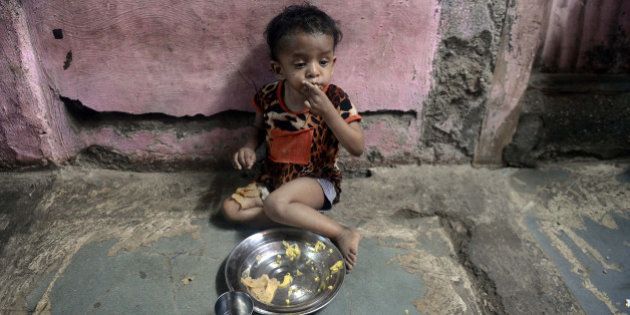
India is home to a quarter of world’s 794.6 million hungry people, and it has more undernourished people than China, according to the State of Food Insecurity in the World published by the Food and Agricultural Organisation (FAO), this week.
The report finds that India has 194.6 million undernourished people, down from 210.1 million in 1990-1992, which constitute 15.2 percent of its population in 2014-2016. China has 133.8 million undernourished people, down from 289 million in 1990-1992, which constitute 9.3 percent of its population in 2014-2016.
While India recorded a decline of 36 percent of undernourished in its population from 1990-92 to 2014-16, China reduced its hungry by 60.9 percent during the same period.
In India, the report said, "the extended food distribution programme also contributed to this positive outcome. Higher economic growth has not been fully translated into higher food consumption, let alone better diets overall, suggesting that the poor and hungry may have failed to benefit much from overall growth."
Global Trend
The report finds that about 795 million people are undernourished globally, down 167 million over the last decade, and 216 million less than in 1990–92, a reduction of 21.4 percent while the global population has increased by 1.9 percent.
72 out of the 129 monitored countries reached the target of halving their proportion of undernourished by 2015 under the United Nations Millennium Development Goals.
"Overall progress notwithstanding, hunger remains an everyday challenge for almost 795 million people worldwide, including 780 million in the developing regions. Hence, hunger eradication should remain a key commitment of decision-makers at all levels," said the report.
"Advances since 1990 show that making hunger, food insecurity and malnutrition history is possible. They also show
that there is a lot of work ahead if we are to transform that vision into reality," it said.
Millennium Development Goals
The U.N. report said India has missed the target of halving its proportion of undernourished by 2015, and FAO found it to be making slow progress in reaching that goal.
The highest burden of hunger in absolute terms is to be found in Southern Asia, the report finds. "China and India alone account for 81 percent of the total reduction of the number of undernourished people in the developing regions between 1990–92 and 2014–16, and China alone accounts for almost two-thirds," the report said.
Nepal and Bangladesh, however, have performed vastly better that India by making reductions of 65.6 percent and 49.9 percent in their undernourished populations from 1990-1992.
Pakistan and Sri Lanka have fared worse than India's 36 percent by making reductions of 12.4 percent and 28.3 percent respectively from 1990-92.
While India missed its MDG target, Nepal, Bangladesh and Maldives reached the goal of halving the proportion of their undernourished by 2015.
China has achieved the MDG goal as well as the more ambitious World Food Summit (WFS) goal of reducing the number of its undernourished people by half, the report said.
India, however, is not expected to reach its MDG goal by 2020.



Contact HuffPost India